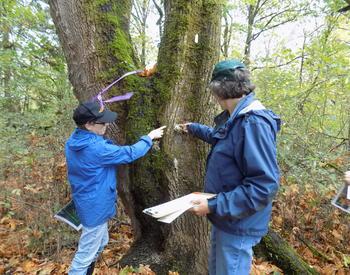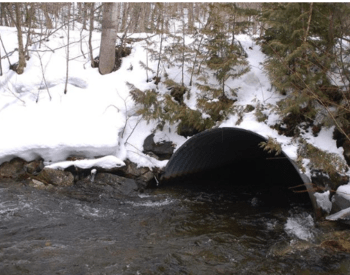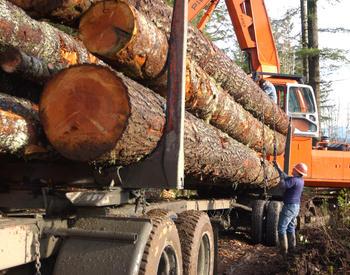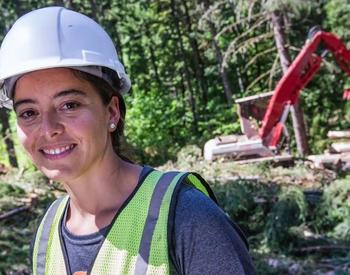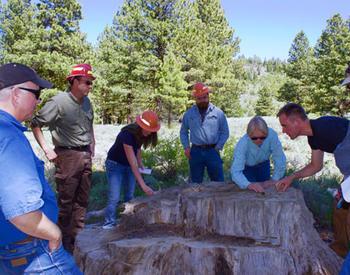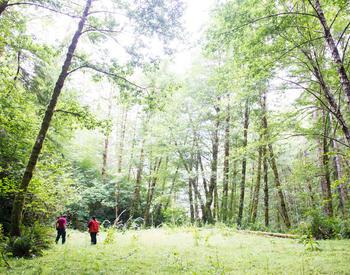Recent media pieces have brought attention to tree mortality documented by the Cooperative Aerial Detection Surveys performed by the US Forest Service and Oregon Department of Forestry.
Significant increases in true fir mortality have been documented across the Ochoco and Blue Mountains and in central, south-central, and southwestern Oregon (Figures 1 - 4). Scattered Douglas-fir mortality (low numbers of trees per acre) was widely documented. Still, severe mortality an acre is reported in SW Oregon.
The US Forest Service and Danny DePinte, Pacific Northwest Region Aerial Survey Program Manager, have provided maps and photos of the impacted true firs (Abies species) such as white fir (A. concolor) and grand fir (A. grandis)) and Douglas-fir (Pseduotsuga menziesii) in Oregon.
Here we present their findings and discuss why the trees are dying.
Why are true fir species dying?
We believe the persistent drought since 2019 is the main cause of tree stress and the fir engraver bark beetle (Scolytus ventralis) is the primary cause of tree death. The drought has been persistent across the area where mortality occurs (Figures 5- 11). Compare these maps with Figure 2.
Other predisposing factors
Although drought and the fir engraver bark beetle are the proximate causes of tree mortality, there are a number of other factors that have influenced forest composition and structure. This is especially associated with:
- Fire suppression
- Increased abundance (density) of true fir
- Occurrence of true firs on drier forest sites.
The average density is higher, the average diameter is smaller, and grand or white fir are more abundant today than historically. In addition:
- Historical high-grade logging that removed large old pine helped shift the composition of many of these sites to true fir dominance
- Root diseases may have increased due to higher tree density and shift to dominance by true firs.
A recent article by Andrew Merschel et al. (Figure 12, 2021, in Trees, Forests, and People) demonstrates where fire history reconstructions have been done across eastern Washington and SW and Eastern Oregon. Figure 13 shows the fires from 1600 to 2000 at these sites. Note that fires were common until around 1900 and almost completely stopped. This lack of fire has profoundly changed forest structure across the region, significantly increasing true fir occurrence and density.
Summary: evidence for increased drought susceptibility
Fire suppression and historical forest management have substantially increased true fir across eastern, central and south-central Oregon. In addition, forests are more homogeneous and have higher density. The recent drought and bark beetles have led to a large mortality event.
Steven Voelker and colleagues published a paper in 2018 entitled: “Fire deficits have increased drought sensitivity in dry conifer forests: Fire frequency and tree-ring carbon isotope evidence from Central Oregon.” This paper showed that dry conifer forests, dominated by true fir, have become much more sensitive to drought due to the high density of true fir.
Drought is strongly associated with increased fir engraver (bark beetle) activity. The shift from forests that routinely burned and were dominated by larger clumped, drought-tolerant trees to a more continuous canopy of drought-intolerant trees has increased susceptibility to drought and bark beetles. Voelker et al. essentially predicted this event.
Douglas-fir
Douglas-fir mortality is more concentrated in SW Oregon up into the margins of the Willamette Valley but is also scattered throughout the state (Figure 14) at low density, but the acreage adds up. The widespread distribution of light and very light mortality/acre is associated with the significant total acres of mortality for Douglas-fir; over a whopping 450,000 acres (Figure 15)!
The mortality of Douglas-fir in SW Oregon has been associated with the flatheaded fir borer (Phaenops drummondi), but may be a bit more complicated throughout the state. One worry is the Douglas-fir beetle in Eastern Oregon. The mortality, also associated with drought, appears to result from a complex interaction of biotic and abiotic factors.
Literature cited
Merschel, A.G., P.A. Beedlow, D.C.Shaw, D.R. Woodruff, E. H. Lee, S.P. Cline, R. L. Comeleo, R.K. Hagmann, M.J. Reilly. 2021. An ecological perspective on living with fire in ponderosa pine forests of Oregon and Washington: Resistance, gone but not forgotten. Trees, Forests, and People.
Voelker, S.L., A.G. Merschel, F.C. Meinzer, D.E.M. Ulrich, T. A. Spies, and C.J. Still. 2018. Fire deficits have increased drought sensitivity in dry conifer forests: Fire frequency and tree-ring carbon isotope evidence from Central Oregon. Global Change Biology.
